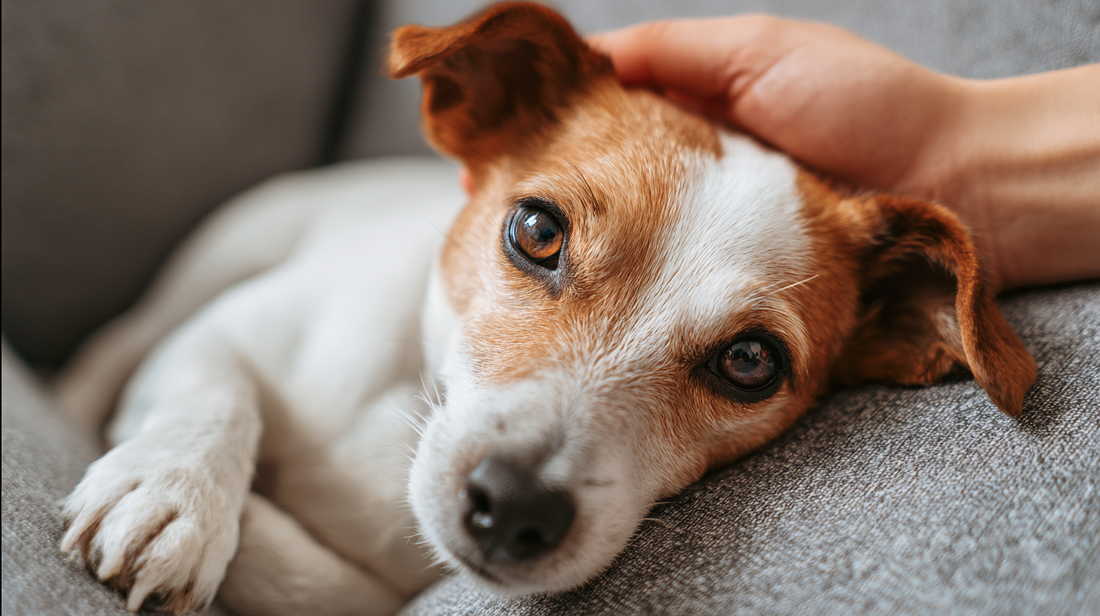Stepping into a veterinary clinic can feel like navigating a minefield for you as a dog owner. You love your furry companion and want them to receive the best healthcare possible, but witnessing the stress of a vet visit – the trembling, tucked tail, anxious panting, or even growling – can be heartbreaking. Research shows that a significant number of dogs display fear-related behaviors during veterinary visits . This fear complicates examinations, can distort medical measurements, and may escalate into aggression, creating safety risks for everyone involved.
Reducing this stress is essential for your dog's well-being, ensuring they receive consistent care throughout their lifetime while creating a positive experience for both you and the veterinary team. The encouraging news is that numerous practical, evidence-based strategies exist that you can implement to help your dog feel more secure and less stressed.
Summary
Understanding why dogs fear veterinary visits
For you as the owner, the vet clinic represents health and healing. For your dog, however, it presents an environment filled with unfamiliar and frightening experiences. Fear and anxiety constitute genuine, unpleasant emotional states that your dog experiences acutely.
Common stressors from your dog's perspective
What makes the veterinary environment so intimidating? Consider it from your dog's perspective:
unfamiliar sights, sounds, and smells: the clinic overwhelms your dog with strange animals and people, potent unfamiliar odours like disinfectants or stress pheromones from other animals, and concerning noises like barking or medical equipment.
uncomfortable surfaces: smooth or slippery floors and examination tables create instability under your dog's paws, making them feel insecure.
leaving home: departing from your dog's familiar home environment triggers stress responses.
loss of control: your dog experiences a lack of control in this unpredictable environment, particularly when strangers handle or restrain them.
discomfort or pain: previous negative experiences involving discomfort or pain, or anticipating pain, can transform future visits into terrifying ordeals.
Each visit where your dog experiences fear intensifies their anxiety for subsequent appointments. Your goal is to break this destructive cycle.

Preparing at home for a successful vet visit
Building comfort through early handling training
Essential comfort items to pack
Familiar items provide substantial security for your anxious dog. Pack a blanket or towel from home that carries your dog's familiar scent, transforming a cold, unfamiliar surface into something more secure. Bringing your dog's favoured chews or toys for valuable distraction during stressful periods.
Don't rely on regular kibble! Instead, bring small, irresistibly tasty, high-value treats that your dog rarely receives, such as cooked chicken or cheese. These special treats become your secret weapon for creating positive associations throughout the visit.
Strategic feeding and medication considerations
If your dog doesn't require fasting for a procedure, consider withholding their full meal before the appointment . This makes high-value treats more appealing and effective for distracting and rewarding your dog.
For dogs who demonstrate significant fearfulness, your veterinarian might recommend anti-anxiety medication to be administered before leaving home. This isn't about sedation, but helping manage their fear response so they can cope more effectively. Your veterinarian will discuss the most appropriate medication and administration method.
Responsible muzzle training

Creating a stress-free clinic experience
Managing waiting room anxiety
Stress frequently begins in the waiting room. Seek clinics that offer separate waiting areas or visual barriers to reduce your dog's contact with other pets. When possible, wait outside or in your car, then call when ready to come inside once an exam room becomes available.
Reception staff can help by offering treats to your dog (check for dietary restrictions first). This creates a beneficial association with the clinic environment. Use the comfort items you brought to help your dog relax. Remain mindful of your proximity to other animals, particularly if your dog tends toward resource guarding. Even getting weighed can trigger anxiety. Look for scales with non-slip surfaces and encourage your dog to step on voluntarily, rewarding them generously for cooperation.
Creating a calmer exam room environment
The examination room, particularly the exam table, often represents the most stressful component of the visit. When appropriate, ask whether smaller dogs can be examined on your lap , where they feel more secure. Non-slip mats on the table or floor are essential for helping your dog feel stable. Research studies indicate that removing animals "to the back" for minor procedures significantly increases stress levels , so request that procedures be performed with you present whenever possible.
Veterinary clinics can contribute by maintaining a calm environment through quiet voices and avoiding disruptive noises. Some clinics use soothing music, which may provide additional calming effects.
Working with your veterinary team for gentle handling
Professional approaches to gentle handling
A well-trained veterinary team will employ non-threatening body language when approaching your dog. This includes avoiding leaning directly over your dog, making direct eye contact initially, or approaching head-on. Instead, turning sideways, squatting down, and using smooth, slow movements combined with a calm voice create a less intimidating presence. Minimal restraint should be used whenever possible , as excessive force increases fear and aggression risk. Food can be used strategically to help your dog cooperate willingly.
Your active role: becoming the treat dispenser
Reading and responding to stress signals
Strategies for minimizing pain and discomfort

Building positive associations for future visits
The power of "happy visits"
Behavioral modification through desensitization and counterconditioning
These represent key behavioral modification techniques for preventing fear and addressing existing negative responses. Desensitization involves gradually exposing your dog to a fearful stimulus at very low intensity that doesn't trigger stress. Counterconditioning involves pairing that low-intensity stimulus with something positive, such as high-value treats.
The process involves systematically breaking down examinations into tiny, manageable steps and rewarding your dog for remaining relaxed at each step. If your dog shows stress signs, the step was too challenging, and you need to return to an easier level. The aim is to change your dog's emotional response from fear to positive anticipation.
Advanced training: cooperative care techniques
Establishing a foundation for lifelong veterinary care
Making veterinary visits positive benefits everyone involved. It improves your dog's welfare and health outcomes, reduces your stress, and increases veterinary team safety and satisfaction.
Remember that preparation is key : training your dog to accept handling, bringing comfort items and high-value treats, and discussing pre-visit medication with your veterinarian can make a tremendous difference. During visits, focus on creating positive associations through treats and low-stress handling principles. Don't underestimate preventative measures like "Happy Visits" and behavioral training techniques to build your dog's confidence over time.
Investing time and effort into these strategies leads to smoother veterinary visits now and contributes to better lifelong health care for your beloved companion. By working collaboratively with your veterinary team, you can help your dog feel safer and more comfortable, transforming vet visits from fearful experiences into something that might even become enjoyable.

The information in this article is based on the following scientific publications:
Kato, M., Miyaji, K., Ohtani, N., Ohta, M. (2012). Effects of prescription diet on dealing with stressful situations and performance of anxiety-related behaviors in privately owned anxious dogs. Journal of Veterinary Behavior Clinical Applications and Research, 7, pp. 21-26.
- Riemer, S., Heritier, C., Windschnurer, I., Pratsch, L., Arhant, C., Affenzeller, N. (2021). A Review on Mitigating Fear and Aggression in Dogs and Cats in a Veterinary Setting. Animals, 11(1), p. 158.
Looking for a solution? Start here
Stylla Calmness for dogs
Supports relaxation and emotional balance with amino acid-based formulation
- Promotes emotional balance and relaxation
- Helps maintain balanced behaviour
- Supports healthy physiological equilibrium
Made in Switzerland with strict quality standards





